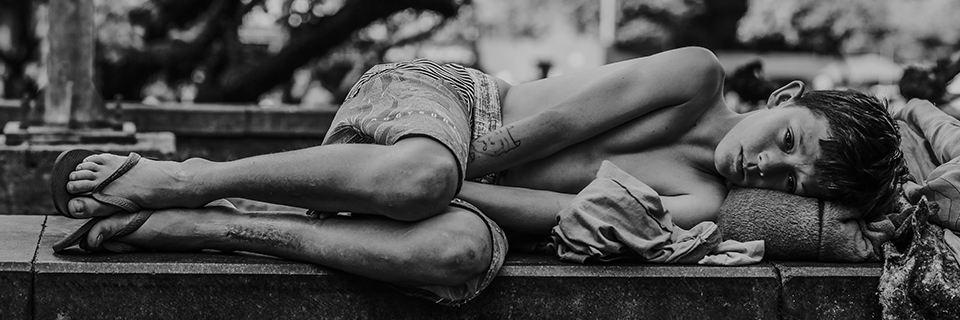
There are 150 million street children worldwide. These voiceless, nameless children are despised and hated by those around them but they are precious to Jesus. They are not nameless to Him. So they have to be important to us. We have to look at them, reach out to them and call them precious as well.
Street children are found on every continent, in every nation. They are children, who have been forced or have chosen to make the street their primary home. Their lives are filled with risk and peril, their future is bleak. In countries like Brazil, street children are killed outright by police because they are seen as less than worthless by their society. In Myanmar, they are kidnapped, drugged, and forced to do dangerous jobs for the military. All over the world, street children are highly vulnerable to sex traffickers who prey on the poor and unprotected.

Most kids, especially boys, end up on the street because their parents believe that, by the time they are 13 years old, they should be working in order to be allowed to eat at home. Some leave home of their own accord because of violence, abuse, or drug use at home. They seek the company of their peers and make de-facto families that stick together and take care of each other. They often use drugs, especially cheap inhalants, like glue, to dull the pain of constant hunger and fear. It is estimated that 50% of all street children are addicted to drugs in some way.

These children, left to survive on the streets, are easy prey for drug dealers and human traffickers. They must have money for their families or simply to survive on the streets, so they are easily lured into drug trafficking with its promise of money and protection. Young boys especially are susceptible to the temptations of money, violence, and sex that come with the drug culture. Street girls are often raped and end up in prostitution as a way to survive. Gangs and drug cartels provide for these children what society does not, protection and a sense of belonging, even though it means, for most of them, that they will not live long.
Three children are killed every day in the slums of Brazil and 90% of these deaths are never prosecuted. Brazil has the highest child murder rate in the world and is famous for the police death squads that murder street children wholesale because they are a nuisance to a society, who largely view them with fear and suspicion. It is even more dangerous in Myanmar, where 10 children die every hour and at least a third of children work. Over 50% of these children are doing dangerous jobs, including forced labor with the military in conflict zones and as well as being involved in child prostitution.
Life Impact works in Myanmar and Brazil with street children, giving them a positive place to go where they will have an opportunity to change the trajectory of their lives. Instead of dying before they are 30, they will have a chance to live a long and happy life and break the cycle of poverty and abuse for their own children. Jesus loves these nameless millions of children, they are not nameless to Him and because of this, they are important to us.
Read the story of Lucas, a poor boy in Brazil who could have ended up on the streets but God intervened in his life and changed his story forever. Click here.
Resources
Abdelgalil, S., Gurgel, R., Theobald, S., & Cuevas, L. (2004, September 01). Household and family characteristics of street children in Aracaju, brazil. Retrieved February 17, 2021, from https://adc.bmj.com/content/89/9/817?fbclid=IwAR2RfSZpsPWdEpXm4OvvCLhoyCl110R0h1_Ka6Rw7dq3sJpdqG_ct
EngageMedia. (2016, March 11). The plight of Myanmar’s street children. Retrieved February 18, 2021, from https://engagemedia.org/2016/plight-of-myanmars-street-children/?fbclid=IwAR0clD9zlrQQMCrQpfyx2aOoI1EWZ4XdsryESVJD9kUiZuk76KtzMtt7XYU
Findings on the worst forms of child labor – Burma: U.S. Department of labor. (n.d.). Retrieved February 18, 2021, from https://www.dol.gov/agencies/ilab/resources/reports/child-labor/burma
Scanlon, T., Tomkins, A., Lynch, M., & Scanlon, F. (1998, May 23). Street children in Latin America. Retrieved February 17, 2021, from https://www.bmj.com/content/316/7144/1596?ijkey=3346d0b3c903e8af36e2c1b490441c206b2b25cd&keytype2=tf_ipsecsha

